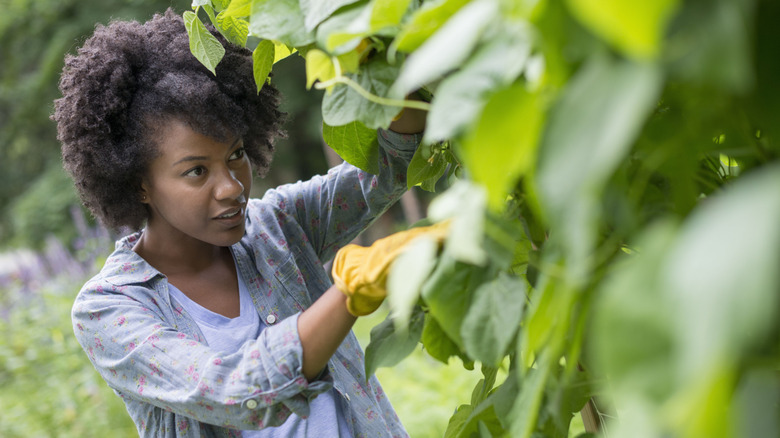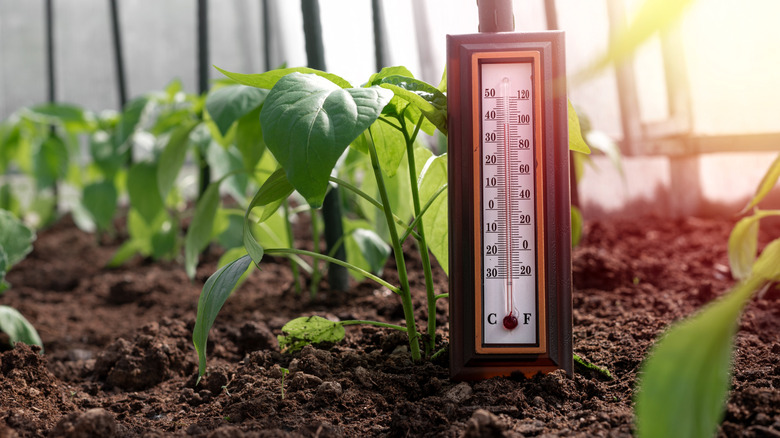The Soil Mistake That's Sure To Hinder Your Green Bean Harvest
Green beans (Phaseolus vulgaris), also known as snap beans, are a favorite of summer gardeners — which is why there is so much disappointment when the harvest is paltry. But pests and diseases aren't the only things that can prevent a bountiful crop — sometimes a small harvest is due to a gardening mistake. When temperatures are either too cool or much too hot, your green bean dreams may flounder in the veggie patch. It's not just air temperatures that can affect the health of a green bean seed as it germinates — it's also the temperature of the soil.
Although most gardeners rely on their last frost dates when planting summer crops like green beans, soil temperature may be more important when planting your garden. Only using the last frost date as a guide can be a mistake when sowing your seeds. Because these plants don't flourish when transplanted, green beans are the popular veggie you should grow from seed instead of a seedling for a better harvest. Growing them from seed is also quite an easy and enjoyable garden task. But newbie gardeners may be in for disappointment come harvest time if they sow their seeds when the soil is the wrong temperature.
The best soil temperatures for sowing green beans in the garden
When the ground isn't warm enough, freshly planted seeds can rot in the cool, damp soil, so the soil temperature needs to be at least 60 degrees Fahrenheit for successful germination. Starting seeds too early can cause a poor harvest — if the seeds do germinate, the plants will grow very slowly during cool weather. Between 60 and 85 degrees Fahrenheit is the best range for sowing this tasty crop, but exactly when the soil reaches those temperatures will depend on your location. For most gardeners in the U.S., the soil hits a warm-enough temperature in the months of April, May, June, or July.
On the other hand, planting seeds during a heatwave can also be a mistake. When the soil temperature is above 95 degrees Fahrenheit, green bean seed germination can be hindered as well. Wondering what the ideal soil temperature is for snap beans? It's a pleasant 80 degrees Fahrenheit. Use a soil thermometer, and take measurements of the soil 4 inches deep to track your conditions. Once your crop is harvested, you might want to save green bean seeds to plant for next year – only when the soil is in the optimum temperature range, of course.

